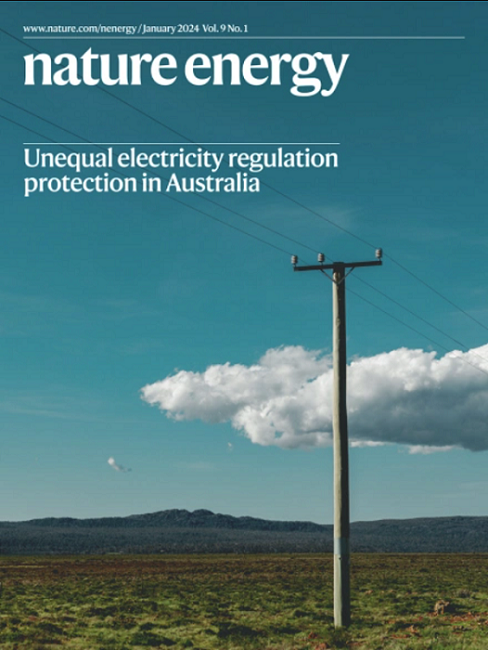构建无电极电池的相间结构
IF 49.7
1区 材料科学
Q1 ENERGY & FUELS
引用次数: 0
摘要
沉积-溶解反应是充电电池功能的关键,但电镀/剥离的可逆性有限,缩短了电池的使用寿命。现在,一种液晶中间相被证明可以控制沉积在优选方向上,从而使无双电极电池具有更强的可逆性和更高的能量密度。本文章由计算机程序翻译,如有差异,请以英文原文为准。


Building interphases for electrode-free batteries
Deposition–dissolution reactions are key to the function of rechargeable batteries, but the limited reversibility of plating/stripping shortens their lifespan. Now, a liquid crystal interphase is shown to control deposition in preferred orientations, enabling dual-electrode-free batteries with enhanced reversibility and increased energy density.
求助全文
通过发布文献求助,成功后即可免费获取论文全文。
去求助
来源期刊

Nature Energy
Energy-Energy Engineering and Power Technology
CiteScore
75.10
自引率
1.10%
发文量
193
期刊介绍:
Nature Energy is a monthly, online-only journal committed to showcasing the most impactful research on energy, covering everything from its generation and distribution to the societal implications of energy technologies and policies.
With a focus on exploring all facets of the ongoing energy discourse, Nature Energy delves into topics such as energy generation, storage, distribution, management, and the societal impacts of energy technologies and policies. Emphasizing studies that push the boundaries of knowledge and contribute to the development of next-generation solutions, the journal serves as a platform for the exchange of ideas among stakeholders at the forefront of the energy sector.
Maintaining the hallmark standards of the Nature brand, Nature Energy boasts a dedicated team of professional editors, a rigorous peer-review process, meticulous copy-editing and production, rapid publication times, and editorial independence.
In addition to original research articles, Nature Energy also publishes a range of content types, including Comments, Perspectives, Reviews, News & Views, Features, and Correspondence, covering a diverse array of disciplines relevant to the field of energy.
 求助内容:
求助内容: 应助结果提醒方式:
应助结果提醒方式:


